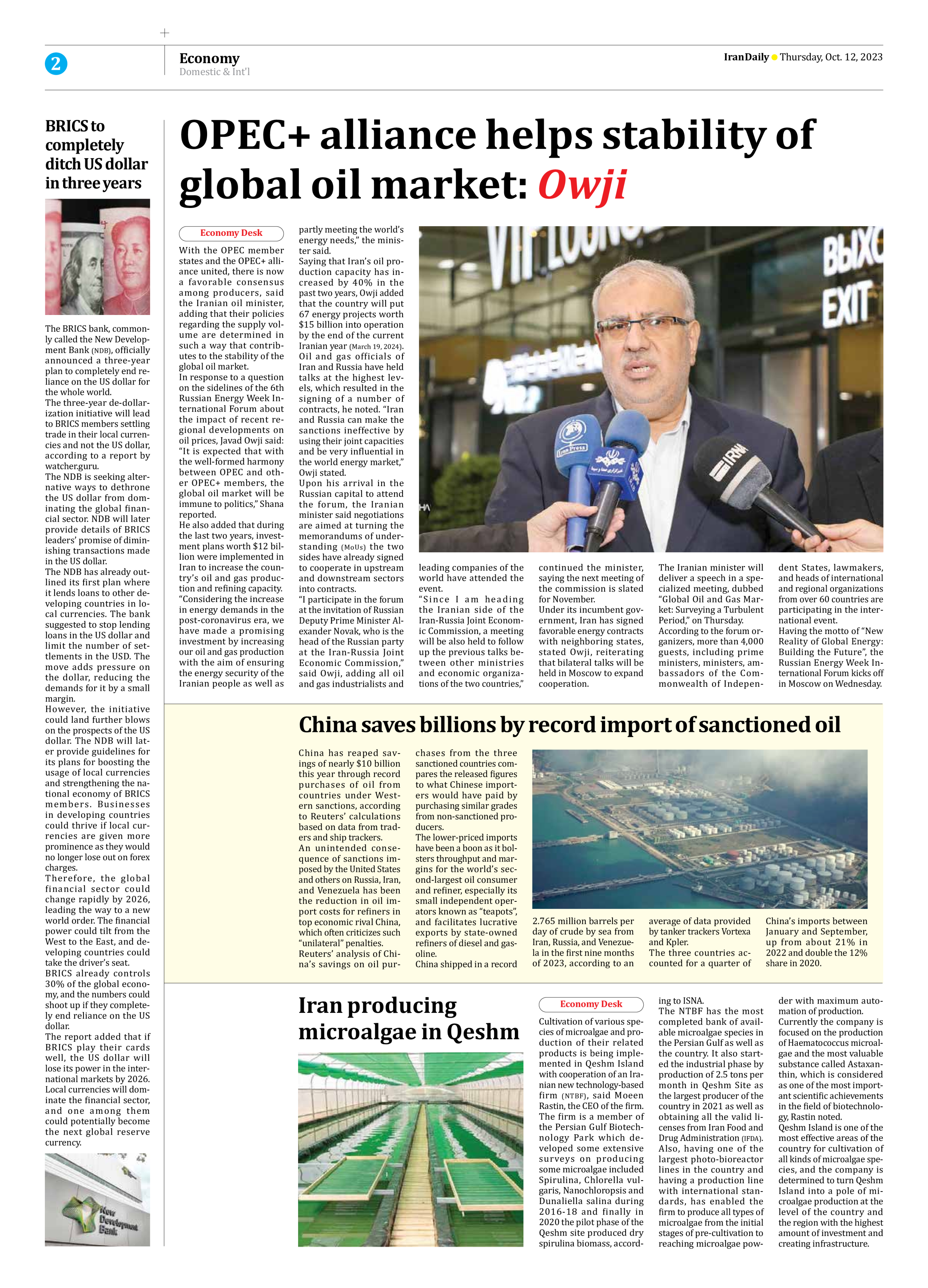
Iran producing microalgae in Qeshm
Cultivation of various species of microalgae and production of their related products is being implemented in Qeshm Island with cooperation of an Iranian new technology-based firm (NTBF), said Moeen Rastin, the CEO of the firm.
The firm is a member of the Persian Gulf Biotechnology Park which developed some extensive surveys on producing some microalgae included Spirulina, Chlorella vulgaris, Nanochloropsis and Dunaliella salina during 2016-18 and finally in 2020 the pilot phase of the Qeshm site produced dry spirulina biomass, according to ISNA.
The NTBF has the most completed bank of available microalgae species in the Persian Gulf as well as the country. It also started the industrial phase by production of 2.5 tons per month in Qeshm Site as the largest producer of the country in 2021 as well as obtaining all the valid licenses from Iran Food and Drug Administration (IFDA).
Also, having one of the largest photo-bioreactor lines in the country and having a production line with international standards, has enabled the firm to produce all types of microalgae from the initial stages of pre-cultivation to reaching microalgae powder with maximum automation of production.
Currently the company is focused on the production of Haematococcus microalgae and the most valuable substance called Astaxanthin, which is considered as one of the most important scientific achievements in the field of biotechnology, Rastin noted.
Qeshm Island is one of the most effective areas of the country for cultivation of all kinds of microalgae species, and the company is determined to turn Qeshm Island into a pole of microalgae production at the level of the country and the region with the highest amount of investment and creating infrastructure.







